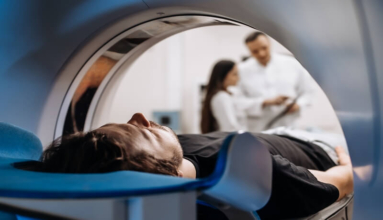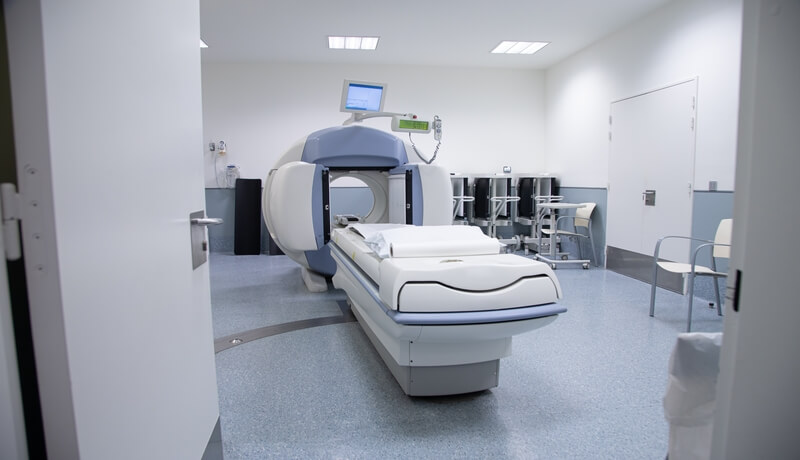Radiology knowledge for rescuers
The Importance of Radiology Knowledge for Maritime Rescuers: Safe and Effective Use of X-ray Equipment Onboard
Onboard a vessel, having access to an X-ray machine can be a crucial tool for diagnosing injuries such as fractures, especially when sailing in remote areas far from medical facilities. However, simply having the equipment is not enough. The maritime rescuer responsible for operating the X-ray machine must understand the principles of radiology and, more importantly, radiation protection to ensure the safety of the crew and the proper handling of any medical emergencies.
What is Radiology?
Radiology is a branch of medicine that uses imaging techniques to see inside the body. It helps doctors diagnose and treat medical conditions. Common imaging methods include X-rays, CT scans, MRI scans, and ultrasounds.
These techniques allow healthcare professionals to look for problems like broken bones, tumors, or internal injuries without needing surgery. Radiologists, the doctors who specialize in this field, analyze the images and provide important information to help with patient care. Overall, radiology plays a vital role in modern medicine by helping identify health issues quickly and accurately.

Why Radiology Skills Are Vital for Maritime Rescuers
Understanding Radiation and Protection
X-ray machines, while incredibly useful for diagnostic purposes, emit ionizing radiation. It is essential that the operator is familiar with the nature of this radiation and the basic principles of radiation protection to safeguard both the patient and the crew. Key factors that must be managed include:
- Proper Shielding: Using lead barriers or protective aprons to shield both the operator and other personnel in the vicinity from unnecessary exposure.
- Distance: Keeping a safe distance from the X-ray machine during exposure to minimize radiation risk.
- Exposure Time: Reducing the duration of exposure to limit the amount of radiation received.
Accurate Positioning and Targeting
Knowing how to position the patient correctly and target the specific area of concern is essential for obtaining clear, useful images. Poor positioning or incorrect targeting can lead to unclear X-rays, which can:
- Result in missed diagnoses, such as unnoticed fractures or dislocations.
- Necessitate repeated exposures, thus increasing radiation risk for the patient and the operator.
Effective communication with the patient about positioning can also enhance the quality of the X-ray images.
Adjusting Technical Settings (mAs and kVp)
Every part of the body requires different technical settings for optimal imaging. The X-ray machine operator must be able to adjust key parameters:
- Milliampere-seconds (mAs): This controls the amount of radiation used and affects image quality.
- Kilovoltage Peak (kVp): This determines the penetrating power of the X-rays and is crucial for different body parts.
For example, a chest X-ray requires different settings than an image of a hand or a leg. Understanding these parameters helps achieve the right balance between image quality and radiation dose.
Basic Recognition of Common Injuries
While detailed image interpretation can be handled by a radiologist via telemedicine, the onboard operator should have a basic understanding of how to recognize obvious findings, such as fractures or dislocations. Immediate recognition of such injuries allows for the prompt initiation of appropriate first aid measures, such as:
- Immobilization: Stabilizing the injury until professional medical assistance is available.
- Communication: Reporting findings accurately to the telemedicine team.
Challenges of Telemedicine Image Transmission
The transmission of high-resolution images, such as X-rays, may not always be immediate due to connectivity issues in remote parts of the ocean. In such cases, the maritime rescuer must be able to interpret critical injuries based on the available image and provide a clear description to the telemedicine team. For example:
- Identifying and reporting the presence of a fracture can enable the medical team to give advice on immobilizing the injured area before the full image transmission is complete.
- Effective communication skills are essential to ensure that the telemedicine team understands the urgency of the situation.
The Role of X-ray in Maritime Rescue and Care
X-ray technology onboard a vessel provides a significant advantage in handling traumatic injuries, particularly fractures or other bone-related issues. The ability to take an X-ray immediately after an injury helps with faster diagnosis and treatment, which can be lifesaving when access to medical care is limited. However, the effectiveness of this tool depends on the maritime rescuer’s ability to:
- Safely and accurately operate the machine.
- Interpret basic findings.
- Communicate effectively with the telemedicine center.
Conclusion
Having a properly trained X-ray machine operator onboard a vessel is not only a valuable resource but a necessary one. The operator must understand the basics of radiology, radiation protection, machine operation, and injury recognition. This knowledge ensures that the rescuer can provide immediate, effective care in the case of serious injuries while maintaining safety for all crew members.
Through timely and accurate assessments, they can help stabilize the patient, reducing the risks while awaiting more definitive care. Ultimately, radiology knowledge equips maritime rescuers with essential skills that can save lives in challenging environments.
Request your appointment by clicking on the picture below.
Radiology knowledge for rescuers


